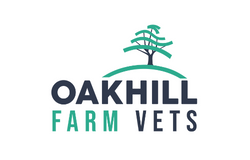Articles
Stay informed with our topical articles, all written by our farm vets.VETERINARY DECLARATIONS FOR EXPORTS TO THE EU
From 13th December changes to legislation concerning requirements for export to the EU are coming into place. These changes mean that all farms selling livestock for slaughter will require an annual vet visit to comply.
Read MoreLIVER FLUKE IN CATTLE
Liver fluke or ‘fasciolosis’ is common in cattle, and according to NADIS costs the cattle industry £23 million each year. The lifecycle involves a snail host which thrives in wet, ambient temperatures and releases cercaria (swimming larvae) between August and October that infect cattle and cause disease that is seen from mid-winter onwards.
Read MoreDIGITIAL DERMATITIS AKA “DIGI”
Wet and muddy conditions provide the perfect environment for Treponemes and other anaerobic bacteria to invade the soft tissues of the feet and cause lameness. Digital dermatitis is also infectious and can spread rapidly through housed herds.
Read MoreAnimal Health and Welfare Pathway
The Animal Health & Welfare Pathway is a government initiative aimed at supporting the continual improvement of farm animal health and welfare. You can book a 2-3 hour vet visit to discuss any key herd or flock health issues on your farm – fully funded by Defra.
Read MoreGrass staggers
Stormy weather and lush pastures increase the risk of grass staggers, particularly in older lactating beef cows. Magnesium cannot be stored so a constant dietary supply is essential. Magnesium levels vary considerably in soil and grass.
Read MoreCobalt deficiency in growing lambs
Last year we found multiple farms having poor growth rates in their lambs over the late summer months. Through investigation with forage analysis and blood sampling, we found many were deficient in cobalt.
Read More